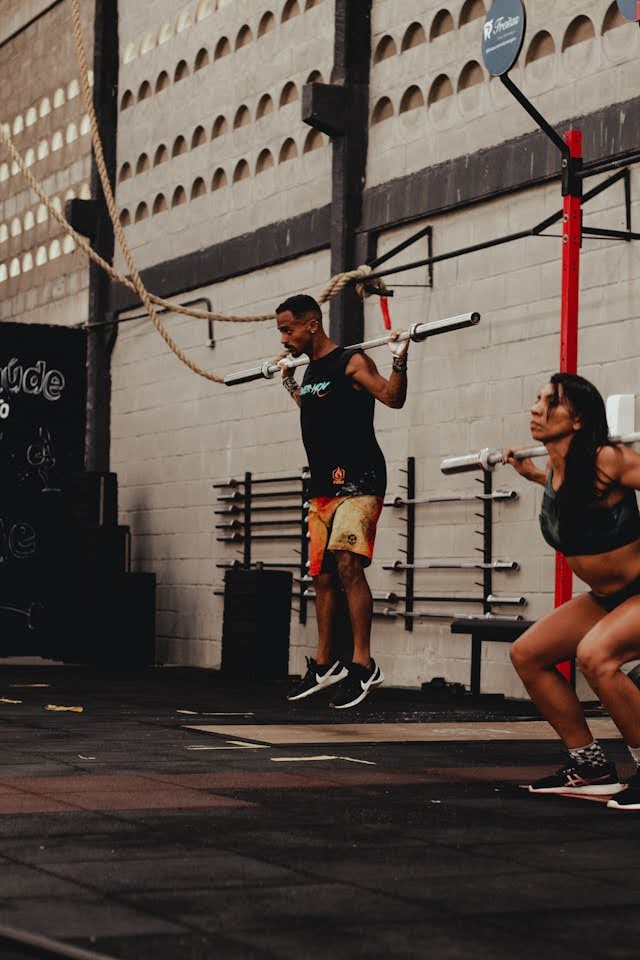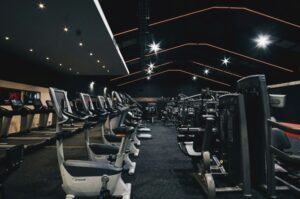
Introduction
Full body workouts are among the most efficient and effective training methods for both men and women. Whether using barbells, dumbbells, or no equipment at all, they offer numerous benefits for muscle growth, strength, weight loss, and overall fitness. Surprisingly, you can maintain and improve your physique without traditional split routines.
This type of workout targets all muscle groups in one session, saving time with sessions as short as three days per week. This is especially useful for busy individuals or athletes seeking lean muscle gains. Understanding the benefits of full body workouts can help tailor a routine to your goals and preferences.
This guide covers key highlights, including a three-day plan, essential movements, strategies for different goals, equipment needs, and considerations for various demographics.
Understanding Full Body Workouts
Full body workouts involve targeting multiple muscle groups in a single session, offering a time-efficient approach for overall fitness. They focus on compound movements like squats, bench presses, and deadlifts, engaging various muscles simultaneously. Unlike split routines that isolate specific muscle groups per session, full body workouts provide a holistic approach to strength and endurance. By incorporating exercises that work the upper body, lower body, and core in one session, they promote muscle balance and coordination.
Full body workouts offer time-saving benefits while promoting effective muscle growth and fat loss. They provide a comprehensive workout experience beneficial for both men and women, supporting a balanced and sustainable fitness journey.
Comparing Full Body Workouts to Split Routines
When deciding between full body workouts and split routines, it’s crucial to understand the key differences.
Full body workouts target multiple muscle groups in one session, optimising overall muscle balance and efficiency. In contrast, split routines focus on specific muscle groups each day, allowing for more targeted training but potentially neglecting certain areas. For those seeking efficiency and a comprehensive approach, full body workouts are a great option. They promote muscle growth, increase strength, and boost overall fitness levels.
On the other hand, split routines may suit individuals aiming for advanced muscle isolation or rehabilitation. However, it’s important to note that split routines can be time-consuming and may not allow for as much work to be done on each body part as full body workouts. Ultimately, the choice between the two depends on individual goals, preferences, and training experience. Choose the method that aligns best with your fitness journey and keeps you motivated to achieve your goals.
Key Benefits of Full Body Workouts for Everyone
Full body workouts offer a myriad of benefits suitable for all individuals, regardless of gender. These routines excel in enhancing muscle balance, aiding in symmetry development for a well-rounded physique. By engaging multiple muscle groups simultaneously, full body workouts maximize caloric expenditure, making them effective for fat loss and cardiovascular health This approach not only streamlines workout programs but also provides a more comprehensive fitness journey.
Incorporating compound exercises like bench press and barbell deadlifts ensures a wholesome muscle engagement, promoting muscle growth and overall strength gains, while also improving range of motion. Embrace the power of full body workouts for a balanced approach to fitness and reap the rewards of a stronger, healthier you. Plus, the DUMBBELL FARMER’S CARRY is a great exercise to include in the best full body dumbbell workout because it has many benefits.
Enhancing Muscle Balance and Symmetry
Full body workouts enhance muscle balance and symmetry by targeting multiple muscle groups in one session, promoting overall stability and proportion. Incorporating unilateral movements like lunges or single-arm rows can address strength discrepancies between sides, improving aesthetics and reducing injury risks.
Maximising Caloric Burn and Fat Loss
Engaging in whole body exercises effectively burns calories by raising the heart rate and working multiple muscles simultaneously. Exercises like squats, deadlifts, and lunges target various muscles, aiding in calorie burn, muscle growth, and metabolism boost for efficient fat burning. These exercises require multi-joint movements, resulting in a higher calorie burn and more muscle stimulation.
Improving Cardiovascular Health
Full body workouts promote muscle growth and enhance cardiovascular health. These routines involve multiple muscle groups, raising heart rate and improving circulation for both men and women. Compound movements like the bench press and overhead press effectively engage the cardiovascular system, boosting heart health and overall fitness levels. Regular full body training sessions build muscle, strengthen the heart, enhance endurance, and stamina. Prioritising cardiovascular health through these workouts is crucial for a holistic fitness journey for all genders.
Essential Movements in Full Body Workouts
To maximise the efficiency of your full body workout routine, incorporating essential movements is crucial. Compound exercises form the foundation of a full body workout, engaging multiple muscle groups in one movement. These movements not only target individual muscle groups but also enhance muscle balance and symmetry, leading to a more muscular physique. Focusing on different movement patterns during your training sessions ensures that you challenge your body in diverse ways, promoting muscle hypertrophy and overall fitness development. Incorporating the carry pattern, a great way to add functional strength and stability, will help you achieve a well-rounded full body workout routine.
Compound Exercises: The Foundation
Compound exercises form the cornerstone of a full body workout routine. These movements engage multiple muscle groups simultaneously, making them incredibly efficient for maximising muscle growth and strength gains. Exercises like squats, deadlifts, and bench presses are prime examples, working various parts of the body in one go. By incorporating compound exercises into your workout plan, you not only target major muscle groups but also improve muscle coordination and stability. They are particularly beneficial for beginners looking to build a solid foundation of strength and functionality in their fitness journey, as well as for those focused on building muscle. Remember, mastering proper form and technique in compound exercises is crucial to prevent injuries and optimise results. Start with compound exercises to lay a strong foundation for building muscle in your full body workout routine.
Equipment Essentials for Effective Full Body Workouts
While embarking on your full body workout journey, having the right equipment is crucial for optimal results. Whether at the gym or home, effective workouts can be achieved with minimal equipment, such as resistance bands or adjustable dumbbells. Remember, the key is consistency in utilising the equipment to maximise your full body workout potential. Invest in these essentials to elevate your fitness journey and achieve your goals.
Must-Have Equipment for Home and Gym
For effective full body workouts at home or in the gym, certain exercise equipment is essential. Including versatile tools like dumbbells, resistance bands, and a stability ball can significantly enhance your workout routine.
For more intense sessions, consider including a barbell for compound exercises like squats and deadlifts, promoting overall muscle growth. Dumbbells offer a wide range of movement patterns, allowing you to target various muscle groups effectively. Resistance bands provide adjustable levels of resistance for muscle growth and toning.
A stability ball challenges your balance and core strength, adding a dynamic element to your exercises. Investing in these basic yet crucial pieces of equipment can elevate your full body workout experience, enabling you to achieve optimal results and maintain a consistent fitness journey. Make sure to incorporate these must-have items to make the most out of your training sessions.
Budget-Friendly Alternatives for Beginners
For beginners looking to embark on their full body workout journey without breaking the bank, there are several budget-friendly alternatives to traditional gym equipment.
Resistance bands offer versatile training options for all major muscle groups, providing a cost-effective way to add resistance to exercises. Bodyweight exercises like push-ups, squats, and lunges are excellent choices that require no equipment at all, making them ideal for home workouts. Additionally, improvising with household items like water bottles or backpacks filled with books can add resistance to exercises without the need for expensive gear.
Full Body Workouts for Males & Females
When tailoring full body workouts for male and female trainees, it’s crucial to consider their specific goals and body compositions. Men often focus on muscle mass and strength development, incorporating exercises like bench presses and barbell deadlifts. Meanwhile, women may prioritise muscle toning and flexibility, opting for movements like dumbbell workouts and resistance band exercises.
Understanding these differences allows for personalised workout plans that cater to individual needs and preferences. Embracing the diversity of goals and approaches in a full body workout routine can enhance motivation and results for both males and females on their fitness journeys. Remember, it’s about celebrating progress and feeling strong and confident in your body.
Full Body Workouts Across Different Ages
Full body workouts cater to individuals of all ages, offering versatile benefits regardless of your fitness journey stage. Adapting these routines for youth emphasises proper form and movement patterns to encourage healthy development. For seniors, modifications focus on improving muscular endurance and maintaining functional movement.
Tailoring full body workouts to different age groups ensures that each session enhances overall strength and flexibility while considering age-related concerns such as joint health and recovery. By adjusting training frequency and intensity, individuals of varying ages can experience the advantages of full body workouts, fostering a sustainable and enjoyable fitness regimen that supports lifelong health and well-being.
Adapting Workouts for Youth and Seniors
For younger individuals, incorporating dynamic movements like jumping jacks or bodyweight squats can enhance agility and coordination. Seniors should focus on low-impact exercises such as gentle chair yoga or resistance band routines to maintain joint flexibility and muscle strength. Youth may benefit from shorter, more frequent training sessions to accommodate their energy levels, while seniors should prioritise adequate rest days for recovery. Always emphasise proper form and listen to your body’s cues.
Addressing Common Age-Related Concerns
As we age, adapting full body workouts becomes crucial to address common age-related concerns. It is essential to focus on maintaining muscle mass, bone density, and joint health through appropriate exercise selection and intensity modulation. Older adults may benefit from incorporating more flexibility and mobility work into their routines to prevent injuries and enhance overall functional fitness. By gradually progressing in their full body workout program, individuals can mitigate age-related muscle loss and improve their quality of life.
Overcoming Challenges in Full Body Workouts
Navigating plateaus and avoiding injuries are typical challenges encountered during full body workouts. To overcome plateaus, inject variety into your exercises, intensify your workouts, or experiment with supersets. Pay close attention to your body’s signals and adapt your routine regularly to prevent stagnation. In the case of injuries, prioritise prehabilitation exercises and maintain proper form to minimise setbacks. Don’t forget to incorporate rest days into your routine to facilitate recovery and muscle repair. Remain patient and committed; progress in full body workouts is a gradual journey worth embracing.
Dealing with Plateaus and Stagnation
Engage in muscle confusion techniques to keep your body adapting and prevent reaching a plateau in muscle size and definition. Remember, plateaus are a normal part of any fitness journey, and with perseverance and creativity, you can push through them to continue progressing towards your goals. Stay motivated and stay consistent in your approach.
Preventing and Recovering from Injuries
To prevent injuries, focus on proper form and technique during full body workouts. Ensuring correct alignment and movement patterns reduces the risk of strains and sprains while promoting muscle gains. Incorporating adequate rest days allows your body time to recover and repair muscles, reducing the chances of overuse injuries. In case of injury, listen to your body and seek medical advice if necessary. Gradually ease back into your workout program to prevent re-injury and continue making progress. Remember, patience is key in the recovery process to avoid setbacks and promote long-term fitness success.
Conclusion
In conclusion, embracing full body workouts offers a plethora of benefits for both males and females. From enhancing muscle balance and maximising fat loss to improving cardiovascular health, these workouts cater to diverse fitness goals. Whether you’re aiming to build muscle mass, boost strength, or shed extra pounds, full body workouts can be tailored to suit your objectives. By incorporating compound and isolation exercises, staying consistent, and adapting workouts as per age and gender-specific needs, you pave the way for a healthier and stronger version of yourself. Remember, persistence and proper form are key to overcoming challenges and achieving long-term fitness success. Keep pushing forward on your fitness journey with dedication and determination!
Frequently Asked Questions
To maximise results, aim for 2-3 full body workouts per week. Rest days in between sessions allow muscles to recover and grow. Tailor frequency based on individual goals and fitness level. Consistency is key to progress and preventing burnout.
Full body workouts can definitely be done without equipment by incorporating bodyweight exercises like push-ups, squats, and lunges. These workouts are convenient for home or travel and can still provide an effective way to target multiple muscle groups.
A full body workout can vary in duration depending on intensity and volume. Generally, they can last anywhere from 30 minutes to an hour, but the key is to focus on quality over quantity.
Yes, full body workouts can aid in weight loss by increasing caloric expenditure, building lean muscle mass, and improving metabolic rate over time. However, nutrition and overall lifestyle factors also play a significant role in weight management.
Absolutely! Full body workouts can complement other forms of exercise like cardio or yoga to create a well-rounded fitness routine that addresses various aspects of health and wellness.



